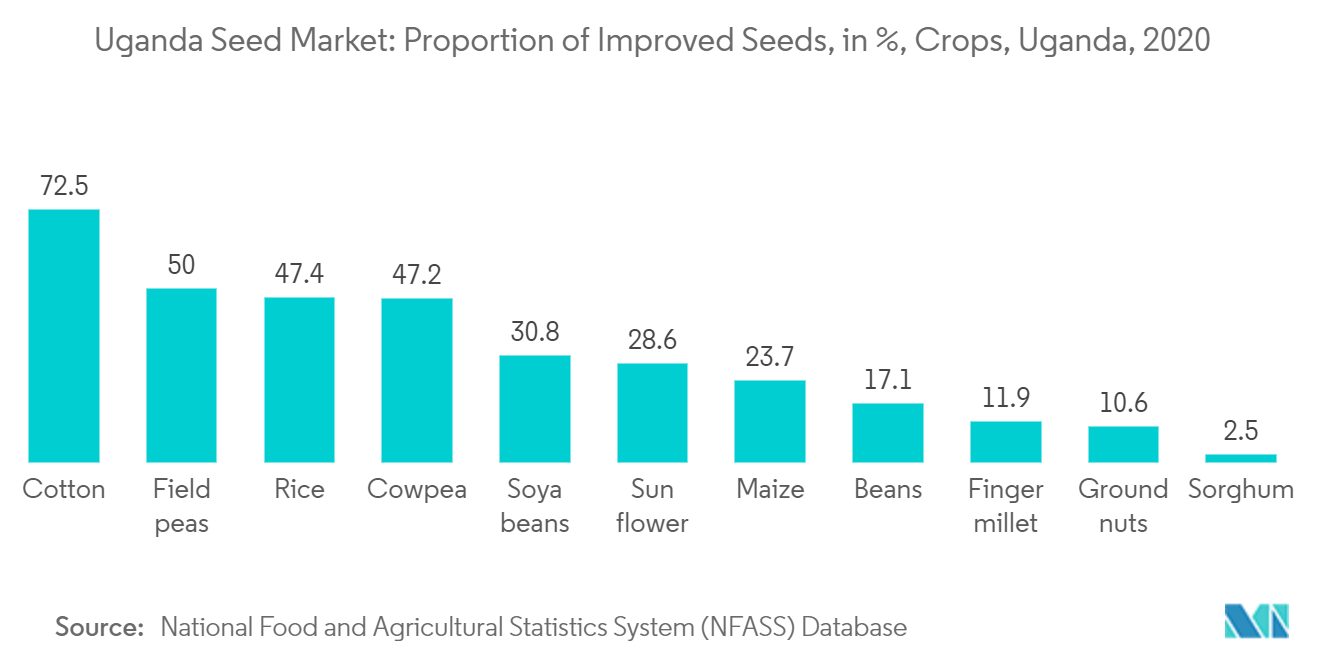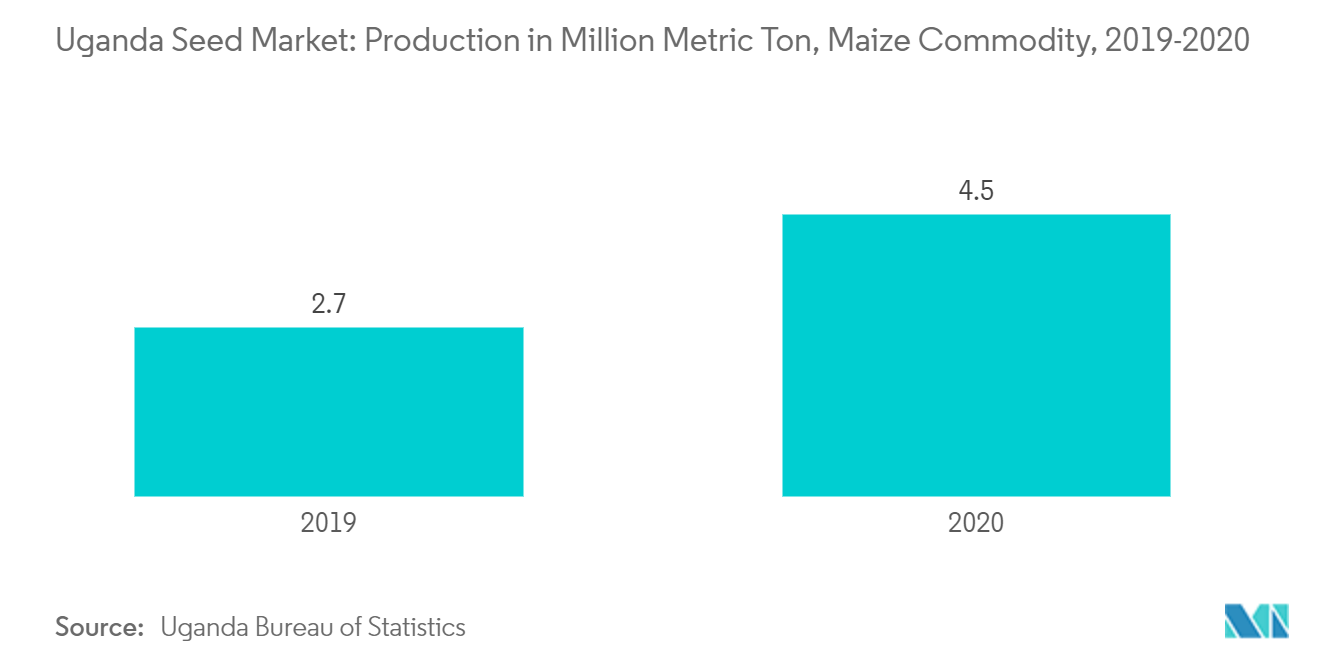Market Trends of Uganda Seeds Industry
Government Support to the Seed Industry
The government favors the development of the market in the country. The National Agriculture Advisory Services (NAADS) is a statutory semi-autonomous body under the Ministry of Agriculture, Animal Industry, and Fisheries (MAAIF) mandated to manage the distribution of agricultural inputs to farmers for sustainable household food security and incomes. NAADS supports the production of maize, beans, as well as cowpeas, sorghum, and groundnuts through the distribution of seeds to farmers to improve household food security. In 2022, the National Agricultural Advisory Services (NAADS) distributed 75 metric tons of sunflower seeds and 500 metric tons of soy beans to 22 cooperative societies in the Lango and Acholi sub-regions. The initiatives by the government have resulted in the adoption of improved seeds for crop production in various districts across the country.
Further, the Ugandan government is responsible for developing research capacity, while the private sector carries out seed production, seed conditioning, and marketing. The government also heads up the creation of an enabling environment and oversees regulations. The Ministry of Agriculture, Animal Industry, and Fisheries, through the Directorate of Crop Production, is the official focal point mandated to regulate the seed industry, with the National Seed Certification Services responsible for seed certification. In addition, to ensure the safe development and application of biotechnology in Uganda, the parliament passed the Genetic Engineering Regulatory Bill 2018.
Further, Uganda's government has paid subsidies to improve small farm productivity, which was also supported by the World Bank under the Agriculture Cluster Development Project, through which it provided hybrid seeds, pesticides, fertilizers, and machinery at subsidized prices. These projects mainly focus on the productivity of cash crops, maize, etc. Consequently, the country fosters improved seeds for several crop varieties in the production year 2020-2021. Thus, the consistent and active involvement of the government in the sector will boost its growth in the coming years.

Maize Dominates the Grains and Cereals Segment
Maize is the most important cereal crop in Uganda, providing over 40% of the calories consumed in both rural and urban areas. The crop has increasingly become a staple food in many parts of the country. Small-scale farmers, who constitute the bulk (80%) of the rural poor, also account for the largest share of maize production. It is grown in every part of the country and is a direct source of livelihood for over 2 million households, according to the National Agriculture Advisory Services. Additionally, some of the leading maize-producing areas in the country are Iganga, Mubende, Soroti, Kabarole, Masaka, Kamuli, and Tororo.
Further, according to the Uganda Bureau of Statistics, the production of maize reached 4.5 million metric tons in 2020, an increase of more than 50% from the previous year despite the 1.7% decline in area under production from the previous year, owing to the increased use and adoption of quality and improved inputs, including seeds. Subsequently, according to the National Agriculture Advisory Services, seeds accounted for 13% of the total input cost in high-input maize production and 23% of the total input cost in low-input maize production, illustrating the cost efficiency of using certified seeds for high-output production.
Subsequently, the farmers in the country in general, and those in Mubende district in particular, lack awareness of quality parameters and post-harvest management practices. Reduced rainfall leading to crop failure, widespread pastures, and water shortages are the other factors limiting the maize production in the country. Therefore, one of the ways to address all the issues would be to have access to improved varieties that can resist climate change and disease. For instance, in 2021, the International Maize and Wheat Improvement Center (CIMMYT) in collaboration with Uganda's National Agricultural Research Organization (NARO) released the UH5051 maize hybrid, which is tolerant to stress. Furthermore, Uganda's national variety release committee introduced four drought-tolerant varieties to the market: WE1101, WE3103, WE3106, and WE3109.


